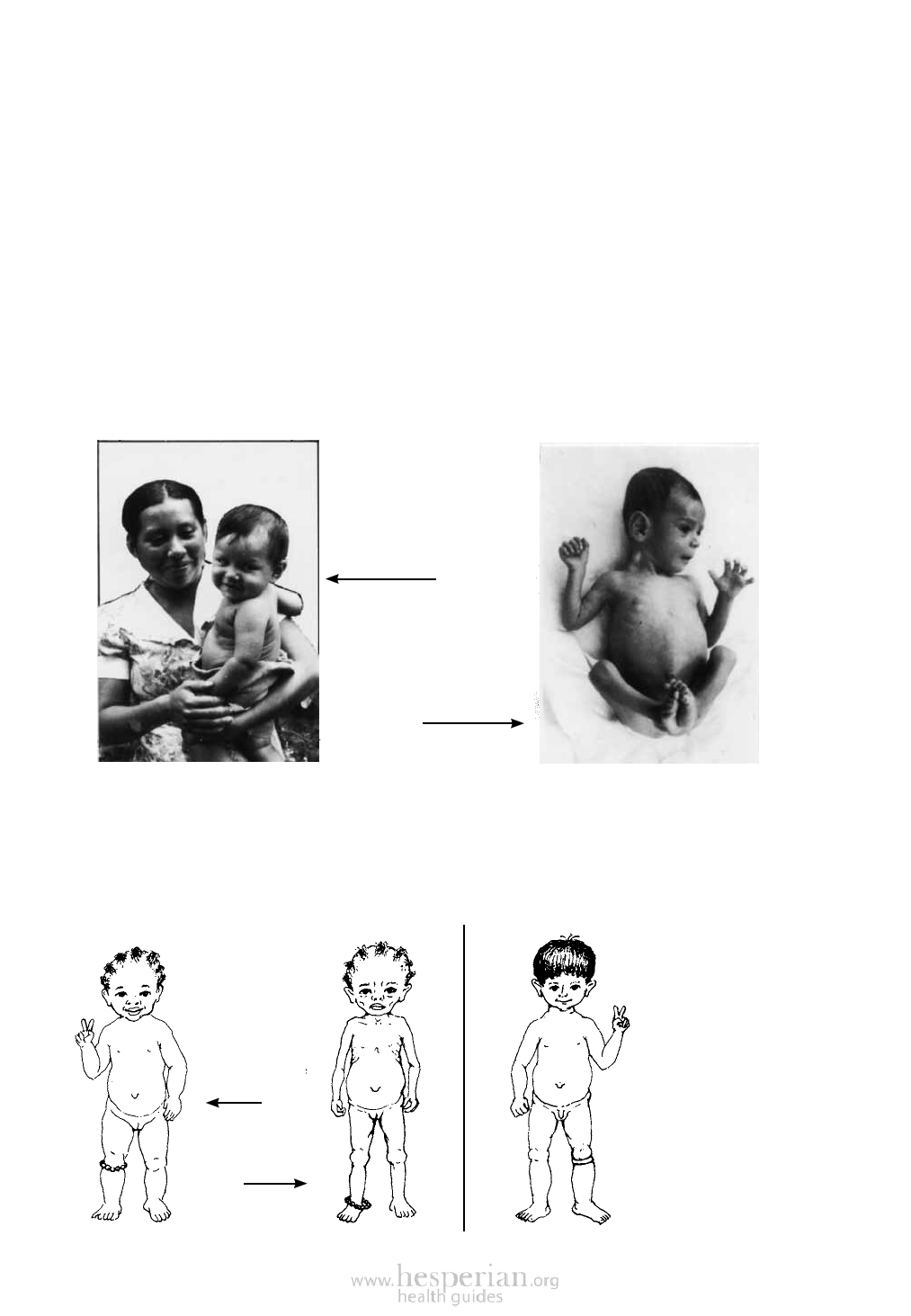
25-12
Also keep in mind that children in some parts of the world have relatively thin
bones and bodies, even when well nourished. You may have to adapt the Thinness
Chart (raise or lower it slightly) according to the size of well-nourished children in
your area. These charts are new and still being tried out. If you try them, please let
us know how well they work and how useful you find them.
Where to get Thinness Charts: These can be ordered from TALC, or from Save
the Children (see p. Back 3). An easy-to-use weight-for-height record card (also in
color) comes with the Chart.
3. Measuring UPPER ARM THICKNESS
The thickness of a child’s upper arms or legs is usually a good indicator of how
well nourished he is.
A well-
nourished
child usually
has fairly
thick arms
and legs.
A poorly
nourished
child has
much
thinner
arms and
legs.
Measuring arm or leg thickness has recently been recognized as one of the
easiest and best methods for checking to see whether children are well nourished.
In parts of Africa and Asia, such measurements have been village traditions for
many years.
In Ghana, Africa,
families put a
chain of beads
just below the
baby’s knee.
If it gets too
tight, they are
pleased.
If it slips
down, they
become worried.
In Kerala, India,
mothers put a
metal ring below
the baby’s knee.
If the ring slips
down, they say
that “the devil is
sucking out the
baby’s juices.”
(This could refer to
either malnutrition
or dehydration.)